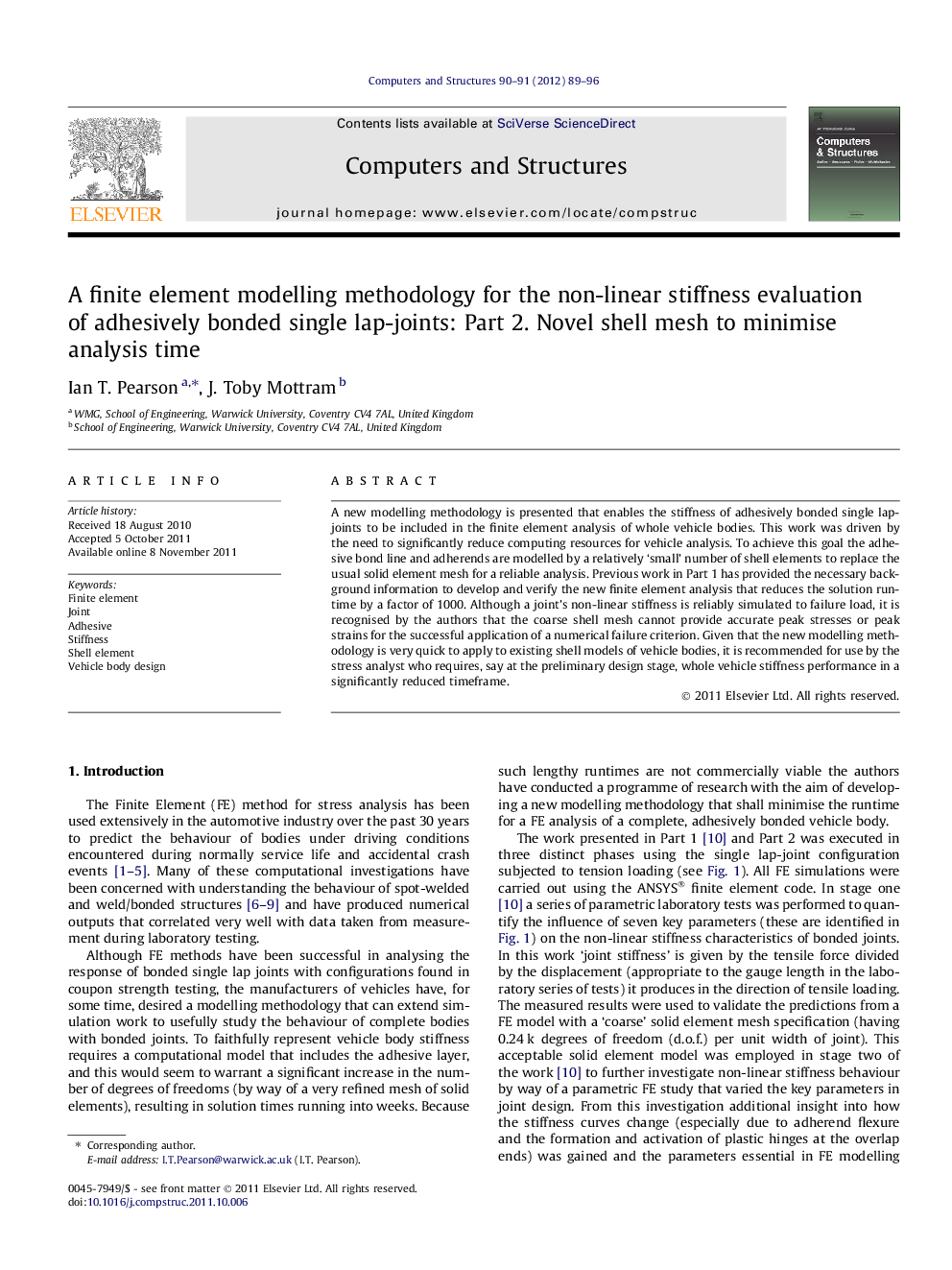| Article ID | Journal | Published Year | Pages | File Type |
|---|---|---|---|---|
| 6924843 | Computers & Structures | 2012 | 8 Pages |
Abstract
A new modelling methodology is presented that enables the stiffness of adhesively bonded single lap-joints to be included in the finite element analysis of whole vehicle bodies. This work was driven by the need to significantly reduce computing resources for vehicle analysis. To achieve this goal the adhesive bond line and adherends are modelled by a relatively 'small' number of shell elements to replace the usual solid element mesh for a reliable analysis. Previous work in Part 1 has provided the necessary background information to develop and verify the new finite element analysis that reduces the solution runtime by a factor of 1000. Although a joint's non-linear stiffness is reliably simulated to failure load, it is recognised by the authors that the coarse shell mesh cannot provide accurate peak stresses or peak strains for the successful application of a numerical failure criterion. Given that the new modelling methodology is very quick to apply to existing shell models of vehicle bodies, it is recommended for use by the stress analyst who requires, say at the preliminary design stage, whole vehicle stiffness performance in a significantly reduced timeframe.
Related Topics
Physical Sciences and Engineering
Computer Science
Computer Science Applications
Authors
Ian T. Pearson, J. Toby Mottram,
